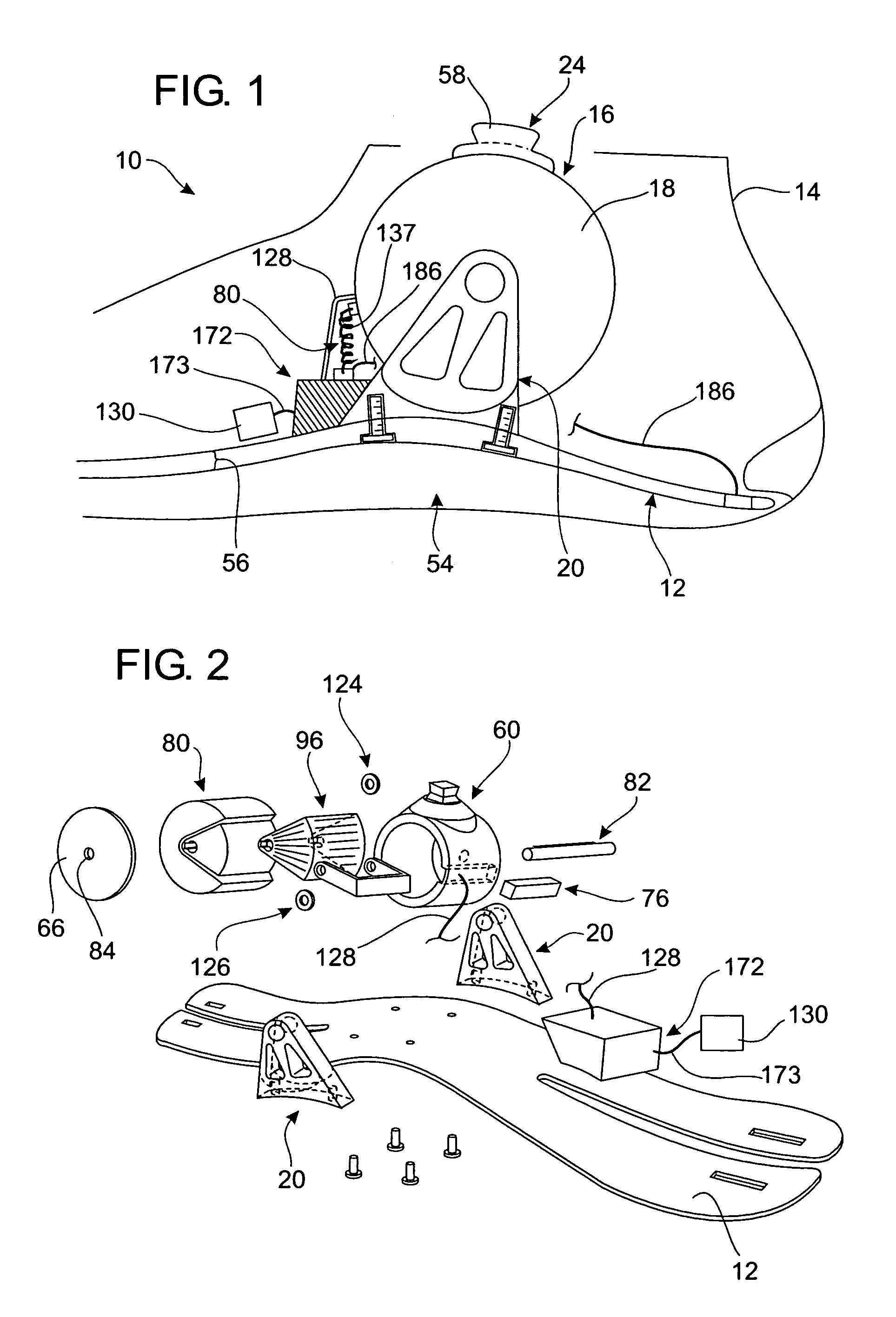Electronically controlled prosthetic system
a technology of electromechanical control and prosthetic feet, applied in the field of electromechanical control of prosthetic feet, can solve the problems of insufficient biomechanical characteristics of current mechanically designed prosthetic feet, inability to achieve significant alterations in gait speed without losing optimal biomechanical characteristics, and deficiency in prior art on numerous levels, so as to improve safety, optimize energy return, and improve the effect of uneven ground
- Summary
- Abstract
- Description
- Claims
- Application Information
AI Technical Summary
Benefits of technology
Problems solved by technology
Method used
Image
Examples
Embodiment Construction
[0074]Referring now to the drawings, wherein like reference numerals designate corresponding structure throughout the views, and referring in particular to FIGS. 1 and 2, reference numeral 10 generally refers to a new and improved prosthetic foot with ankle system, hereinafter referred to as prosthetic foot collectively, in accordance with the present invention. Invention 10 generally comprises keel 12, foot shell 14, ankle joint assembly 16, dampening means or system 18, a bracket assembly 20, sensor system 22, and attachment means 24.
[0075]Furthermore, invention 10 is generally shown in a configuration for a right foot. It is understood that a left foot configuration is considered. It is further understood that invention 10 may be used on other joints and associated appendages. The term appendages should not be considered limited to limbs such as arms and legs. Still furthermore, the term joint generally refers to rotationally attached members.
[0076]Referring to the drawings a...
PUM
 Login to View More
Login to View More Abstract
Description
Claims
Application Information
 Login to View More
Login to View More - R&D
- Intellectual Property
- Life Sciences
- Materials
- Tech Scout
- Unparalleled Data Quality
- Higher Quality Content
- 60% Fewer Hallucinations
Browse by: Latest US Patents, China's latest patents, Technical Efficacy Thesaurus, Application Domain, Technology Topic, Popular Technical Reports.
© 2025 PatSnap. All rights reserved.Legal|Privacy policy|Modern Slavery Act Transparency Statement|Sitemap|About US| Contact US: help@patsnap.com



